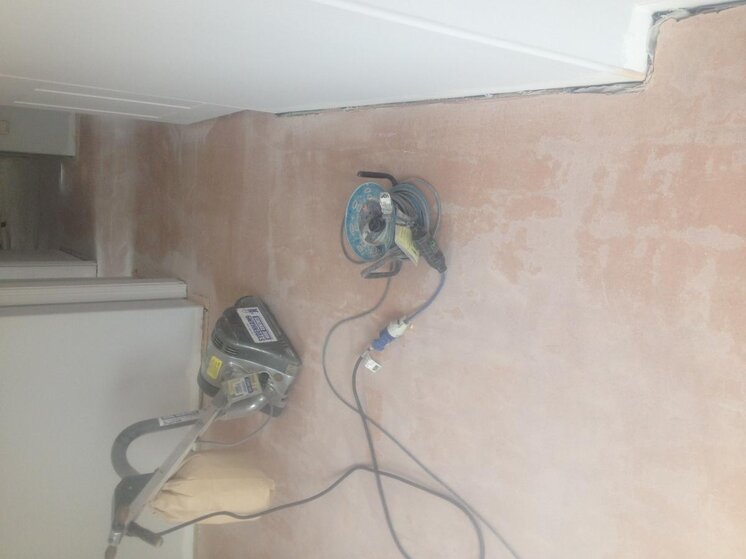M
Matthew77
Hi All
I have a couple of questions regarding tiling prep for Anhydrite screeds and was hoping someone here might be able to offer some advice?
A few months back i quoted for a floor tiling job for a wet underfloor heating system. The screed the builder decided to use was a gyvlon thermio+. I was sent some info regarding drying times, priming, adhesives and removal of surface laitance by the company that laid the screed.
The screed has been down a few months now so I went to the job today and started to sand the screed to remove the laitance. What i was expecting was to be sanding a fairly loose dusty film off the surface and when i started sanding it with my floor polisher and some 60grit carbon paper the laitance was coming off quite easily revealing the courser texture of the screed underneath, but this soon started to be really hard work and after a few hours it seemed like i was getting nowhere with it. So I went and hired a big floor sander and some 40grit sanding belts for it and spent the next few hours making lots of dust, but hardly starting the surface. :mad2:
So I guess my question is do I need to remove this surface layer of laitance if its not coming off when sanding? I have about 30m2 of screed to prep and today I think I've just about done 10m2. Also after doing a bit more research into removing laitance I've found a few sources saying that the laitance should be removed between 4 and 6 days after the screed is poured, this info was not mentioned in the documents the screed company gave me just said "Ensure that the surface ofthe screed is free from laitanceor surface skins and then priorto continuing, the surfaceshould be sound and dust free. The removal of loose material suchas laitance or dust is normally a straight forward procedure"
Any advice here would be handy thanks.
I'm also going to include a photo as that might help

I have a couple of questions regarding tiling prep for Anhydrite screeds and was hoping someone here might be able to offer some advice?
A few months back i quoted for a floor tiling job for a wet underfloor heating system. The screed the builder decided to use was a gyvlon thermio+. I was sent some info regarding drying times, priming, adhesives and removal of surface laitance by the company that laid the screed.
The screed has been down a few months now so I went to the job today and started to sand the screed to remove the laitance. What i was expecting was to be sanding a fairly loose dusty film off the surface and when i started sanding it with my floor polisher and some 60grit carbon paper the laitance was coming off quite easily revealing the courser texture of the screed underneath, but this soon started to be really hard work and after a few hours it seemed like i was getting nowhere with it. So I went and hired a big floor sander and some 40grit sanding belts for it and spent the next few hours making lots of dust, but hardly starting the surface. :mad2:
So I guess my question is do I need to remove this surface layer of laitance if its not coming off when sanding? I have about 30m2 of screed to prep and today I think I've just about done 10m2. Also after doing a bit more research into removing laitance I've found a few sources saying that the laitance should be removed between 4 and 6 days after the screed is poured, this info was not mentioned in the documents the screed company gave me just said "Ensure that the surface ofthe screed is free from laitanceor surface skins and then priorto continuing, the surfaceshould be sound and dust free. The removal of loose material suchas laitance or dust is normally a straight forward procedure"
Any advice here would be handy thanks.
I'm also going to include a photo as that might help


